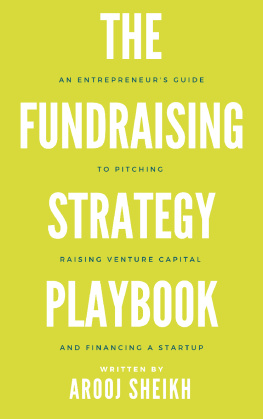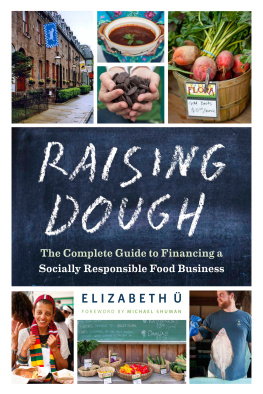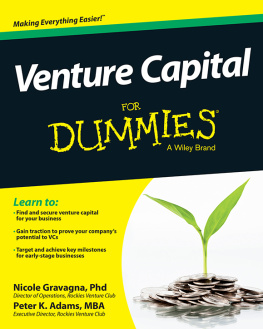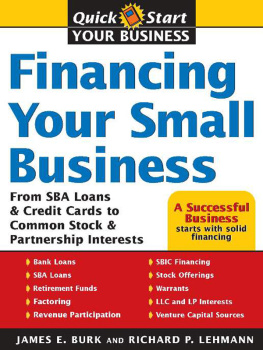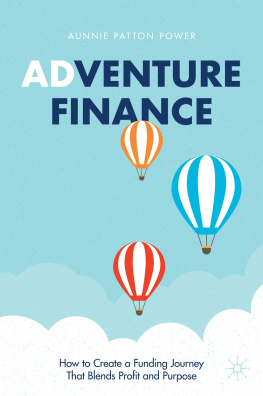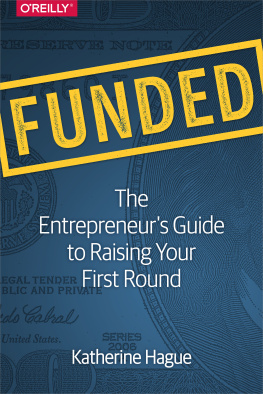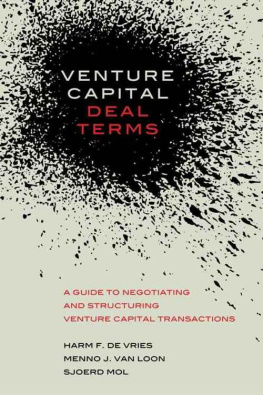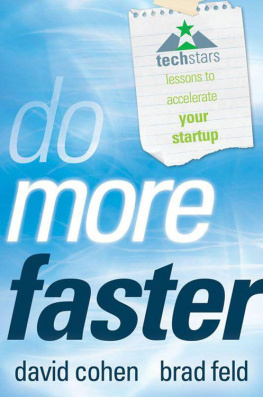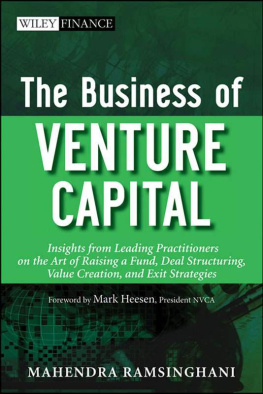THE FUNDRAISING STRATEGY PLAYBOOK:
An Entrepreneurs Guide To Pitching, Raising Venture Capital, and Financing a Startup
by
AROOJ SHEIKH
Copyright 2021 by Arooj Sheikh
THE FUNDRAISING STRATEGY PLAYBOOK: An Entrepreneurs Guide To Pitching, Raising Venture Capital, and Financing a Startup
All rights reserved. The moral rights of the author have been asserted. No part of this book may be reproduced or used in any manner, including information storage or retrieval systems without written permission of the copyright owner except for the use of quotations in a book review.
ACKNOWLEDGEMENTS
This book was a collective effort from all the people who contributed their insights, ideas, helped with revisions, and otherwise contributed to this book. Thank you for your support!
Brad Feld, Managing Director of The Foundry Group and Co-Founder of Techstars
Jason Feifer, Editor in Chief of Entrepreneur Magazine and host of the Pessimists Archive podcast
Arjun Chopra, Partner at Floodgate Capital
Mamoon Hamid, Partner at Kleiner Perkins
Gillian Muessig, Managing Director of the Sybilla Masters Fund and Co-Founder of Moz
Aileen Lee, Partner at Cowboy Ventures
Fischer Yan, CPG startup advisor formerly at GGV Capital & NTT Venture Capital
Cindy Bi, General Partner at CapitalX Rolling Fund
Eric Menees, Founder of TradeUp (Y Combinator)
Nihar Patel, General Partner at Journey Venture Partners & Chief of Staff at Newchip
Andrew Ryan, Founder & CEO of Newchip Accelerator
Dana Kanze, Assistant Professor of Organizational Behavior at London Business School
Ben Quazzo, Venture & Growth at Accel
Atif Khan, Co-Founder & CTO of Alkira; Founding Team Member of Viptela (acquired $600M+)
Michael Asch, President of Anniston Capital, Inc.
Gil Dibner, General Partner & Founder at Angular Ventures
Tanya Hall, CEO of Greenleaf Publishing Group
Ashley Wellington Bieschke, Co-Founder of The Relish and Mentor at 500 Startups
Howard Marks, CEO and Co-Founder of StartEngine
Stephen Lane, Co-Founder of FlyHomes
This book is dedicated to my Dad, for believing in me and always reminding me that anything is possible.
CONTENTS
INTRODUCTION
Can you imagine how many brilliant ideas humanity must have missed out on? How many brilliant ideas didnt come to life?
We hear stories of companies like Facebook, Google, and Apple disrupting industries and fundamentally changing the way people go about their everyday lives. But what about the scores of ideas that were brushed off? The ideas we passed on because of a less than stellar pitch or simply because we didnt have our coffee that morning?
What if someone had already figured out the key to scalable, sustainable energy or discovered the cure to all genetic diseases?
How many crazy, Elon Musk-like personas must we have had for one to finally stick?
Thomas Edison, the famous inventor, said it himself, many of lifes failures occurred when people did not realize how close they were to success when they gave up. How many companies at the helm of truly changing things died because of something so inconsequential as running out of funding? How many ideas were one step away from success?
According to Brad Feld, Managing Director of The Foundry Group and Co-Founder of Techstars, every single successful company that Ive been involved in has had at least one near-death experience.
Starting a company is hard. Doing something meaningful is hard. You do it because you believe the world is going to be fundamentally different. Youve seen the future, and youre trying to pull the world into that future kicking and screaming because its a significantly better one, says Arjun Chopra, Partner at Floodgate Capital.
This book is about empowering world-changing ideas. Capital is the lifeblood of innovation, and this is the playbook on how to get it.
Good Ideas Are Always Crazy Until Theyre Not - Elon Musk
According to Jason Feifer, Editor in Chief of Entrepreneur Magazine and host of the Build For Tomorrow podcast, historically, people have been notoriously bad at predicting the future and adapting to things.
The waltz, which is now considered an elegant and classy dance, was perceived as scandalous and even dangerous when it first gained popularity. Before TV and video games, novels were considered distracting and a bad influence, accused of corrupting the youth and planting dangerous ideas into the heads of housewives.
Its interesting to see how people tried to predict the future in the 1900s because they just take the modern technology of the day and then drive it forward, says Jason. People often have difficulty fast-forwarding and imagining the complete restructuring of everything we know because we start from the old and accelerate the ideas that already exist.
For example, when Henry Ford invented the car, it was advertised as a replacement for horses. The problem is that people dont like change. They liked their horses. They were comfortable with their horses, so why did they have to swap it out for something new?
The solution was to start advertising the car as the new horse. People need to understand innovation as a new version of something they already like. According to Jason, early marketing campaigns had to build a bridge of familiarity for new ideas. Thats why we refer to the power of a car engine as horsepower.
An example from Jasons podcast, Build For Tomorrow, is that people wouldnt get into automatic elevators without a human operator, so they added a soothing female voice to build a bridge of familiarity.
The point is, you cant connect the dots looking forward. Building something new is an iterative process. Sometimes adoption will be immediate, and other times it might be hilariously slow to catch on only to spread like wildfire after.
There are so many different ways to make things happen. Theres no step by step process to building an amazing company. Revolutions dont happen linearly, which is why sources of financing like venture capital, angel investors, crowdfunding platforms, and others exist. Its to give you the space to experiment, fail, and figure it out.
Life can be broader once you discover one simple fact: Everything around you that you call life was made up by people who were no smarter than you. And you can change it. You can influence itYou can build your own things that other people can use. Once you learn that, youll never be the same again. - Steve Jobs
Walt Disney was fired for lacking imagination. Oprah Win frey was told she was unfit for television news by a TV producer. She went on to become the host of The Oprah Winfrey Show, which aired for a whopping 25 seasons. Anna Wintour was fired from her first job as a junior fashion editor at Harpers Bazaar. She went on to become the Editor in Chief at Vogue.
Failure is just success in progress. If all of these people could do it, why not you? Why not your idea?
If youre building a startup, strive to create a company that will fundamentally change something in the world. Make sure that humanity would have missed it if it didnt happen.
The greatest danger for most of us is not that our aim is too high and we miss it, but that it is too low and we reach it. - Michelangelo
HOW TO USE THIS BOOK
Whether youre a first-time founder looking to get up to speed on everything you need to get started with a fundraise or an experienced founder interested in learning about how to strategically finance your company for its long term success, this book is just the resource for you.
While this book can be read through, feel free to skip around to sections that are most helpful to you, since each chapter is largely self-contained. This book is a reference guide that you can frequently refer back to. Lets do a quick overview of how the book is organized:
Next page
